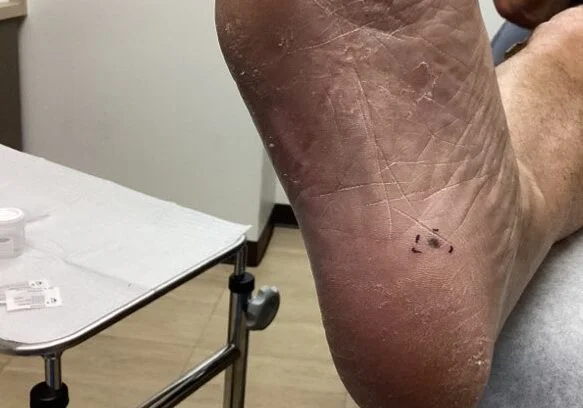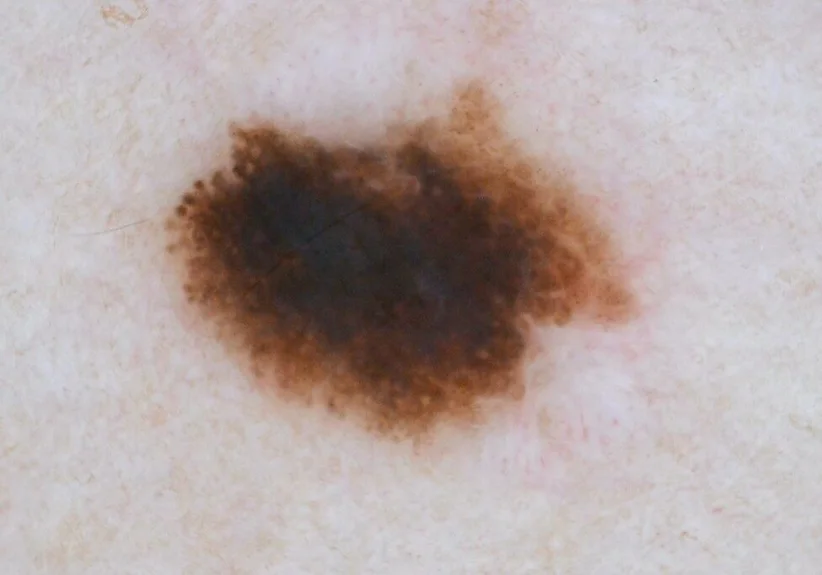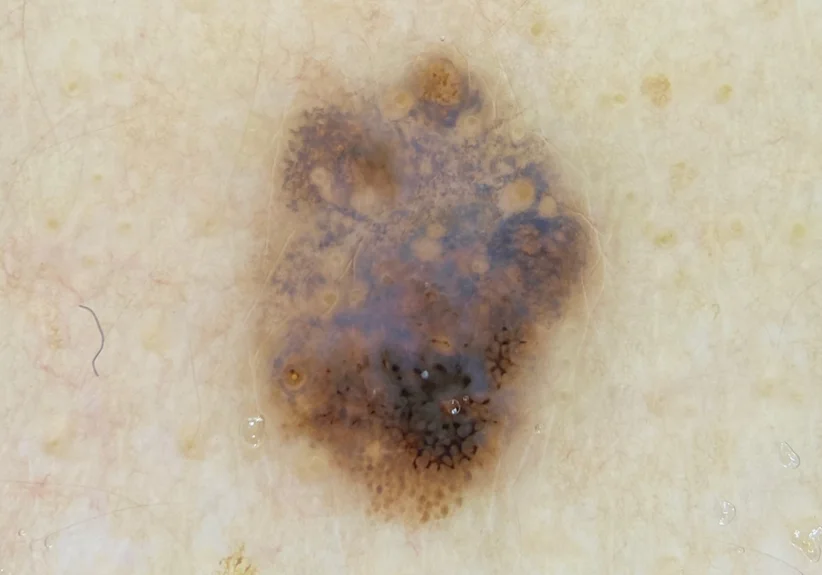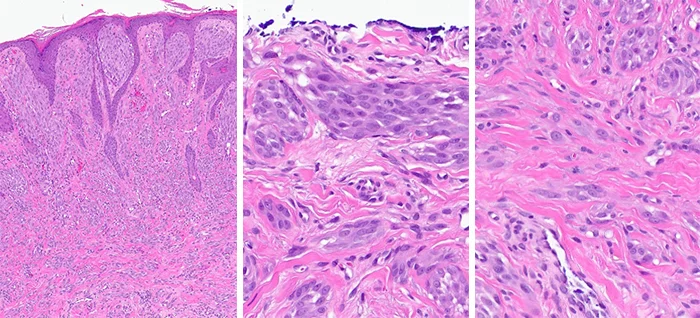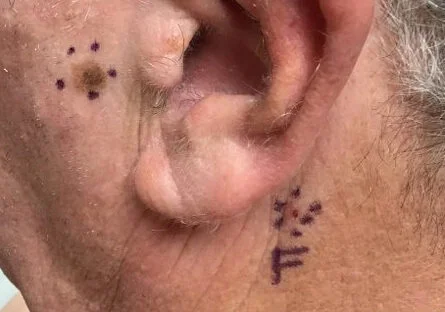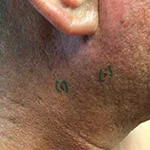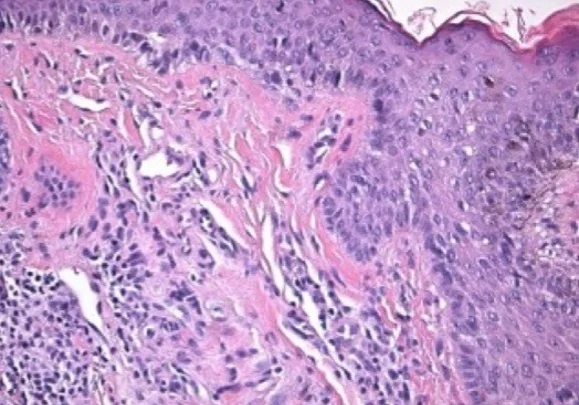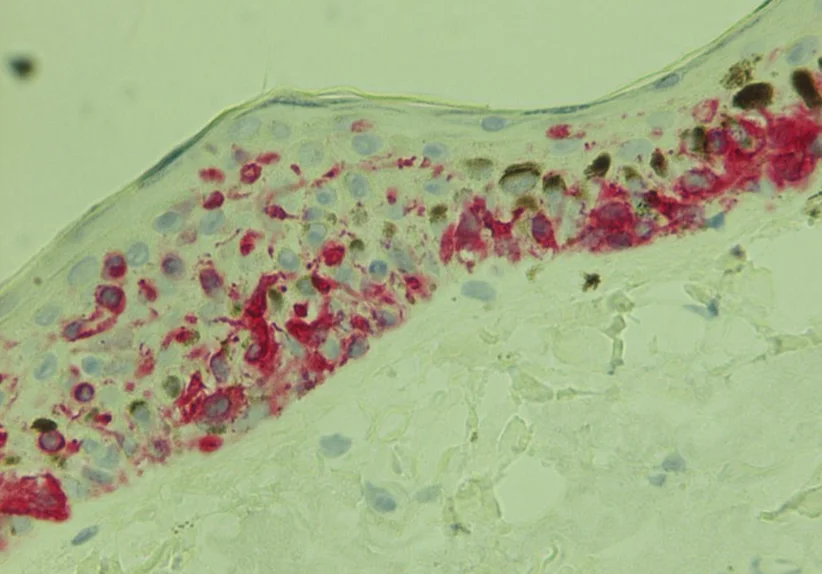Guiding patient care in ambiguous melanocytic lesions
MyPath Melanoma is a gene expression profile (GEP) test that provides clarity in managing patients with ambiguous melanocytic lesions.
GEP provides objective information to clarify malignant potential
When patients are diagnosed with routine nevi or malignant melanoma, the treatment plans are clearly defined by medical guidelines. However, there is a lack of clarity and standardization in the most appropriate management plan for patients with ambiguous, atypical, and abnormal melanocytic lesions. MyPath Melanoma can clarify the underlying malignant potential of the lesion allowing providers to escalate or de-escalate surgical treatment and follow-up frequency.
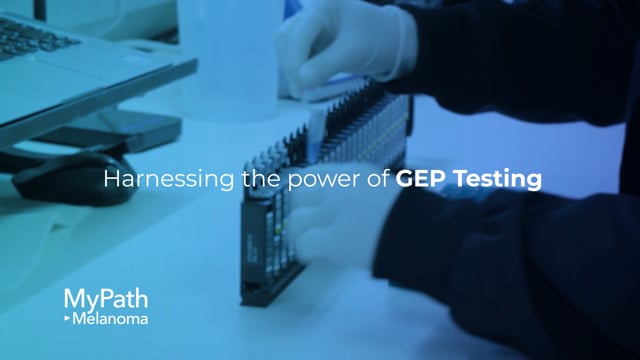


Aiding dermatology providers in determining malignant potential
In recent studies and case reports, 1,2 ancillary diagnostic GEP testing has aided dermatologists in determining the malignant potential of these challenging melanocytic lesions. This allows providers to confidently align patient management to the malignant potential as determined by GEP.
MyPath Melanoma GEP testing provides an objective assessment of the expression levels of 23 genes and applies a proprietary algorithm to classify the lesion as suggestive of benign or suggestive of malignant.3 Numerous studies have demonstrated high sensitivity and specificity 4-8 and clinical utility 9–12 of GEP testing for dermatology providers.
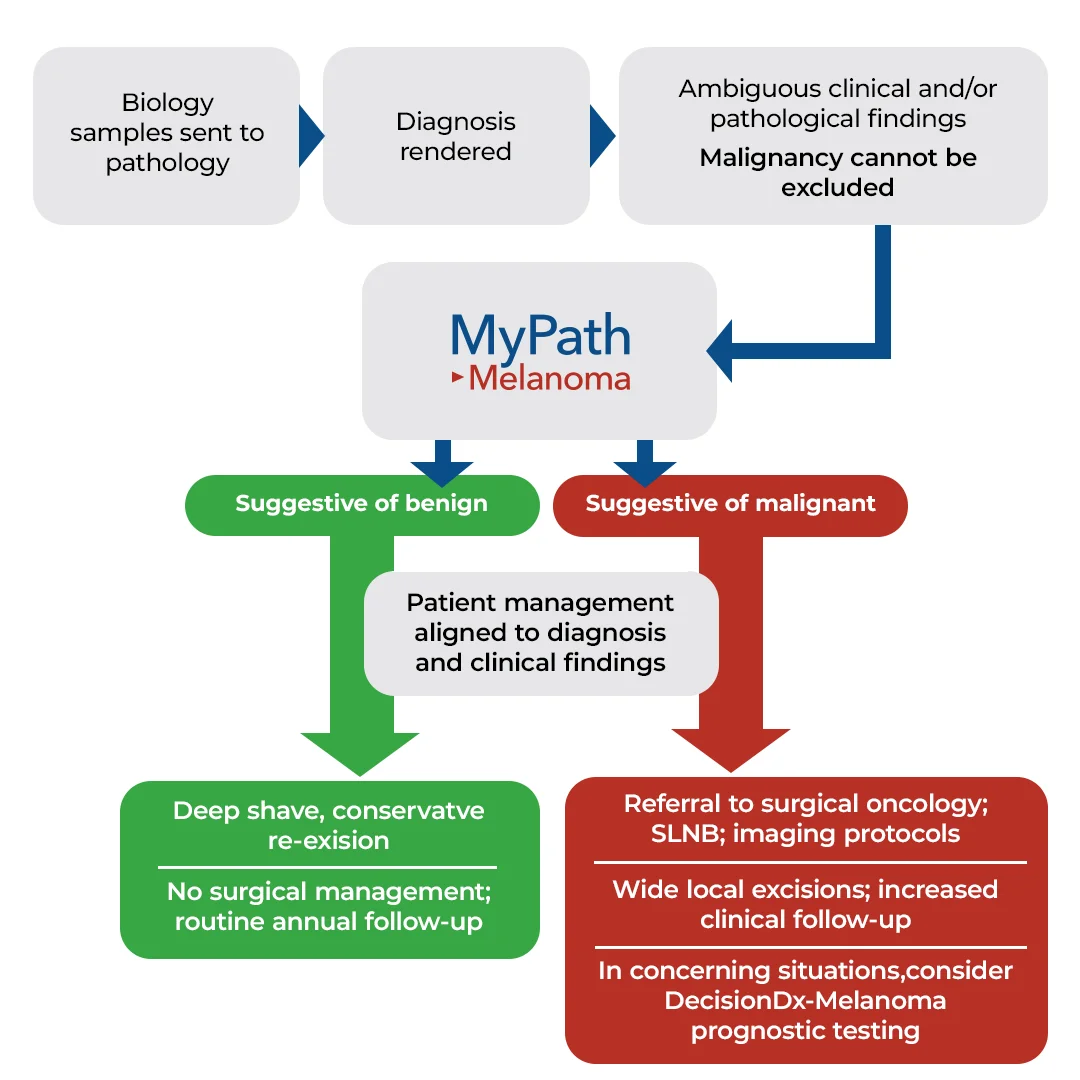


Hear how MyPath Melanoma can be used in your practice
“When we need to make a decision on excision margins and future surveillance then the MyPath test has become a useful tool for me and my patients.”
Learn how MyPath Melanoma provided clarity to a dermatologist when making management decisions for a patient with an ambiguous lesion.

Examples of cases that are appropriate for testing

Borderline or uncertain diagnosis
Atypical intraepidermal melanocytic proliferation (AIMP)
Borderline or severely dysplastic nevus
Cannot exclude melanoma in situ
Cannot exclude early-evolving invasive melanoma

Uncertain malignant potential
Atypical Spitz tumor
Melanocytic tumor of uncertain malignant potential (MELTUMP)

Conflicting clinical and/or histopathological features
Highly concerning clinical history or dermoscopic features
Critical mismatch between clinical and histopathological findings
Equivocal, ambigious, or indeterminate result from ancillary testing such as IHC, FISH, or CGH

Treatment recommendation
Surgical management in cosmetically sensitive areas
Follow-up management decisions
Recommendation to re excise without definitive diagnosis for melanoma
Explore case studies
Get started with MyPath Melanoma





